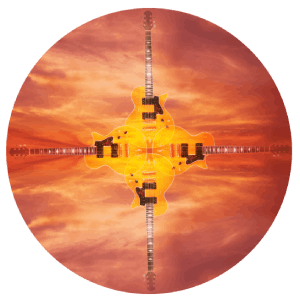Guitar Sight-Reading
Vth Position: The Essential Guide to Guitar Sight-Reading
By Author Steve Girardi on February 25,2025
Did you ever wonder why most guitarists are generally such poor sight-readers when compared to saxophonists, clarinetists, and other instrumentalists? Often, during my 40 years of teaching I have asked that question and searched for an answer. In fact, while sitting in my studio one evening waiting for a student to arrive, I had a deep realization that the answer is starting in fifth position and not first position. All the great guitarists that I have witnessed over my lifetime have one common characteristic: They primarily position their hands in the middle of the instrument when soloing or improvising. Therefore, why not use this same approach in all melodic situations?
What Makes the Fifth Position Method Different?
Traditionally, the guitar has been taught starting in the first position with the index finger at the first fret, therefore forcing the player to use a combination of fingered notes and open strings. It is confusing for a beginner student to adjust between fingering certain notes and not fingering other notes when being asked to play the open strings: That is the basic flaw with first position. The result of this inconsistent approach has an overall negative effect in fluency on the instrument, which leads to frustration and confusion.
By contrast, when playing and sight-reading using the Fifth Position Method, the student is learning to read by placing their index finger at the fifth fret and has an assigned finger for every note without the confusion of incorporating the open strings. A simple overview of this would be first finger fifth fret, second or middle finger at the sixth fret, ring finger at the seventh fret and the pinky finger is placed at the eighth fret. This approach is very easy to memorize, helping facilitate a quicker understanding of the fingerboard.
Why Fifth Position?
Fifth position is the center and heart of the guitar. When a beginner piano student goes for their first lesson, the first note they are taught is MIDDLE C. This makes total sense, because the student is being taught from the approximate center point of the piano. By contrast on the guitar, students are taught to start in first position, which is one of the most difficult areas on the instrument. In first position the guitarist is playing very close to the nut, which creates tension, and it is also where the frets are the widest and hardest to reach.
In fifth position the student can easily see the natural whole steps and half steps that exist in music, without the confusion of the open strings. Position playing is the key element in developing your sight-reading skills. Position playing means that you are designating a particular and specific area on the fingerboard to focus on when sight-reading. This is essential because of all the replication of notes throughout the fingerboard. This is one of the principle dilemmas for the guitarist to overcome.
The answer for decades has been to start in first position and work your way mastering all the positions on the guitar. The problem with this approach is that it is long, tedious and uninspiring. In fact, most guitarists forgo sight- reading once they have achieved a basic working knowledge of how to read music, falling way short of their goal of being a proficient sight-reader. So how do we solve this puzzle? The answer is by position playing—but what position is optimum? All my professional experience and research has determined that the Fifth Position Method is the solution. If you are investing the time and energy to learn how to sight-read, make sure you master the fifth position. As you evolve on the path of sight-reading, all positions on the guitar can and should be implemented and extrapolated once the fifth position is mastered. I encourage this approach.
